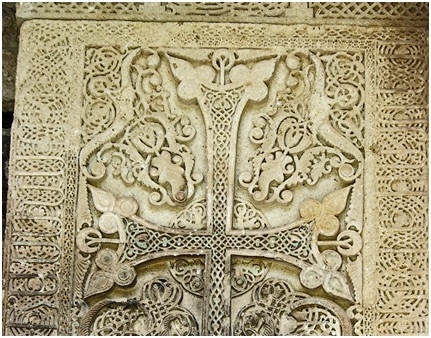NVIDIA and Artec bring 3D content to life in Armenian monastery
NVIDIA and Artec join forces to demonstrate scanned models of ancient religious memorial stones in 3D stereo, enabling spectators to dive into medieval culture at the Tatev monastery in Armenia.
In October 2010, Artec Group, a manufacturer of high-quality 3D scanners, was invited to a picturesque village in Armenia called Tatev. The company’s aim was to scan fragments of ancient religious history – beautifully carved memorial stones known as khachkars, which are typically found around monasteries and showcase its results later at a cable car opening ceremony leading to the medieval Tatev monastery.

Image belongs to Eupator.
Located on a mountaintop, the village houses the Tatev monastery, a valuable heritage site of Armenian culture, whose construction dates back to the 9th century. Difficult to reach by any means of transportation, the religious site suffers from a declining number of visitors. A cultural program was launched, “Revival of Tatev”, which includes building the world’s longest cable car allowing both tourists and residents to reach the monastery in a little over 11 minutes. Artec Group was invited to showcase its 3D khachkari scanning results at the cable car opening ceremony.

CHALLENGE
Scanning one of those famous memorial stones, which were both 2 meters high, took less than an hour. The front side of a khachkar is a detailed relief, including miniature sculptures, intricate compositions, and decorations made of stone. To improve its 3D results, Artec used an MHT scanner that is specifically designed to capture exact shapes in lively color.

The results received from scanning these khachkars were nothing short of amazing, with Artec MHT scanners able to capture every detailed leaf and crevice in high-resolution color. In the future, these models will be able to serve as a foundation for a comprehensive 3D museum.
A new challenge then presented itself: How to present the khachkars without losing their true dimensional accuracy for the ceremony. After all, what good is a 3D image on a 2D screen?
From all possible presentation methods out there, Artec opted for a stereoscopic demonstration of received 3D models. As Artec software programmers work with Open GL, the only way to showcase results in 3D stereo was to use the professional graphic card NVIDIA Quadro.
NVIDIA’s patented allows for demonstrating virtual content in 3D stereo, as long as it is programmed in Open GL. To visualize the captured model, the professional graphic card NVIDIA Quadro, (together with its Quadro Quad Buffered Professional Stereo Technology) is combined with a stereoscopic-enabled set of a projector and 3D glasses. This configuration let ceremony visitors dive into a fully immersive illusion of Armenian religious culture coming alive.

OUTCOME
Feedback following the event was incredible, with guests raving about the quality of the scan, the beauty of the stones, and of how real the 3D content felt. For many, it felt like standing right in front of the khachkar – almost as if you’d be able to reach out and touch it yourself.
The projection was as real as it gets: together with NVIDIA, Artec not only preserved essential Armenian history in Tatev, but was able to demonstrate its virtual achievement the way it deserved to be experienced.
Artec decided that this success was worth duplicating, as the results achieved with NVIDIA’s stereo visualization technology opened more doors to making the most of Artec’s 3D scans. Including this feature into standard software Artec Studio™ seemed a natural next step.
Shortly after the event, Artec’s software started supporting the 3D stereo visualization feature. Artec Studio 0.7 enables its users to showcase their models in 3D stereo. With an NVIDIA Quadro video card, all there is left to do is to get a 3D-enabled projector and glasses to experience captured scanning results coming alive.
Watch a video about the khachkars being scanned here:



